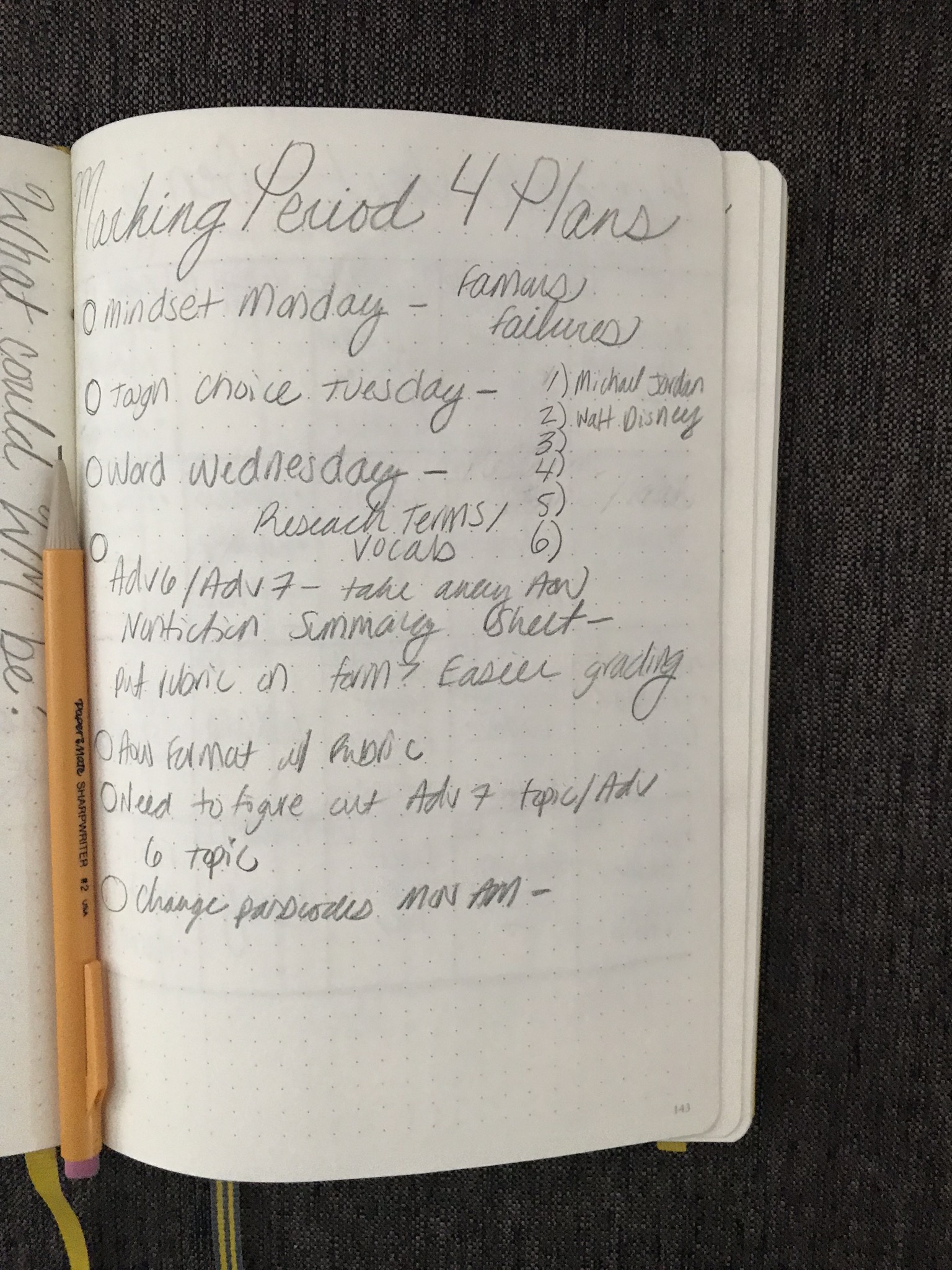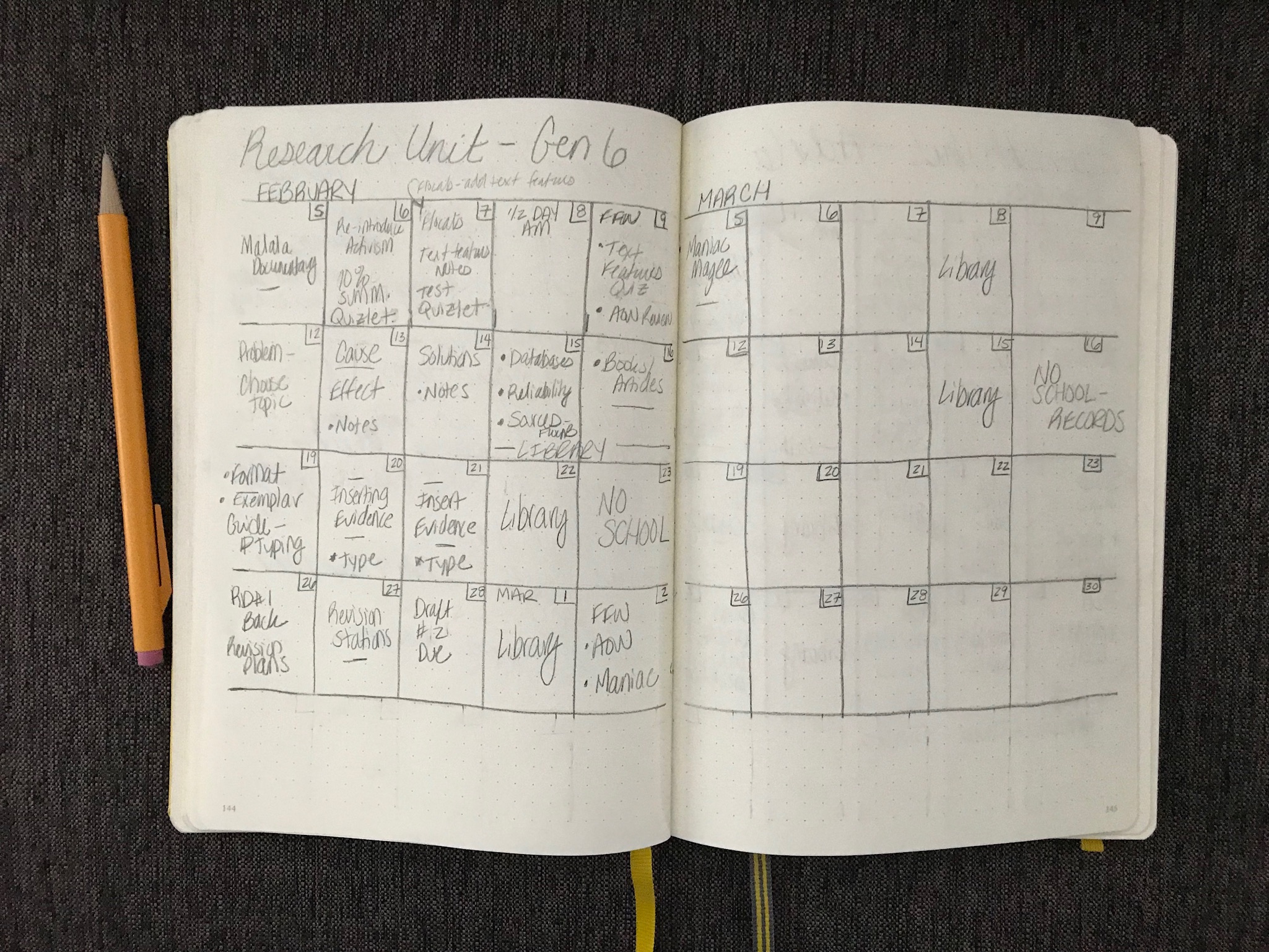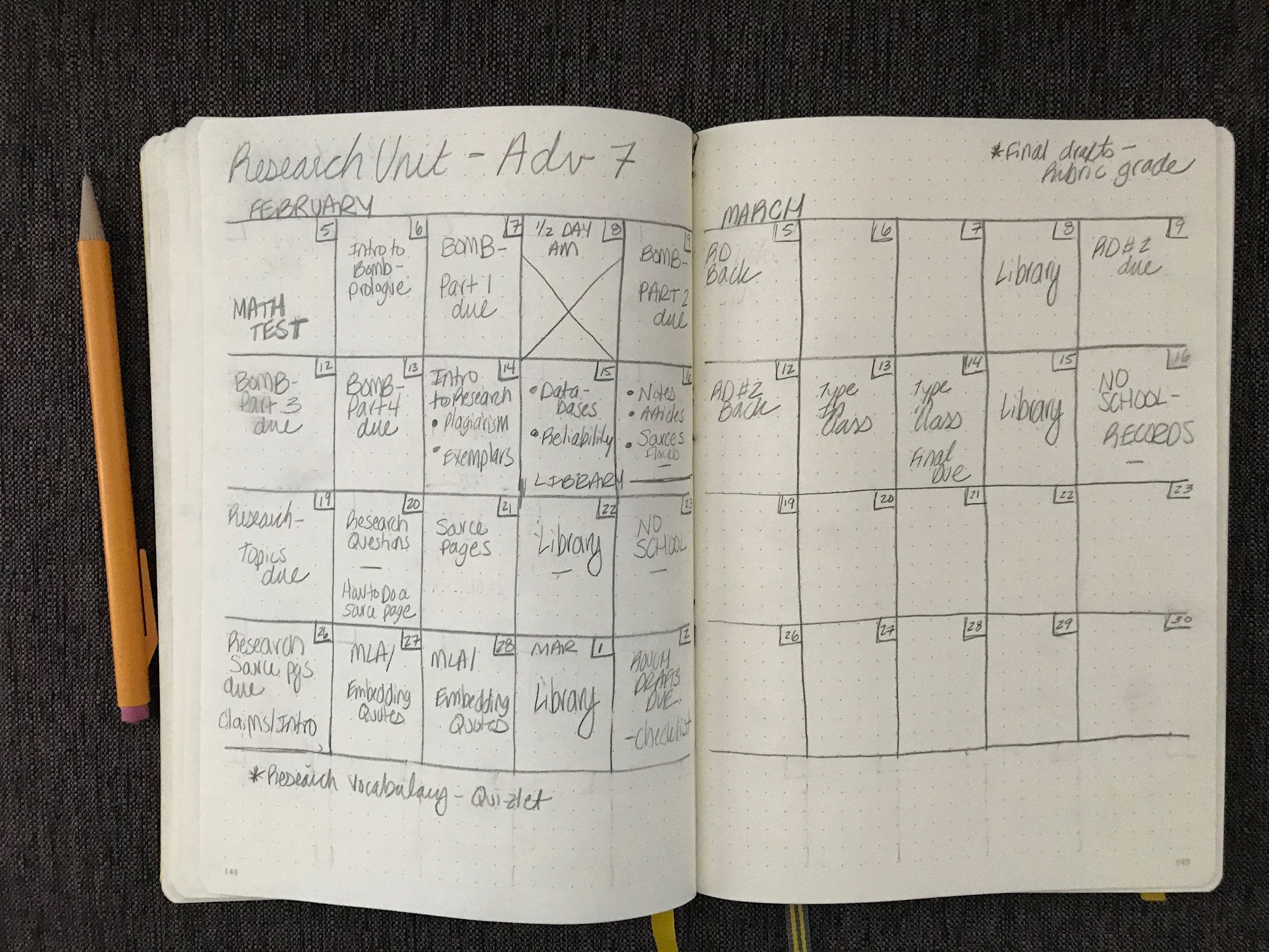How to Make a Research Unit Plan in Three Hours
Teacher vs. Research Unit Plan
Whether you have one of those moments where you decide to change your whole game plan up, or if you have something (like I did) that caused you to go into an unexpected mad scramble, sometimes it is helpful to know how someone else tackled a difficult task in a short amount of time. Research is the mother of all daunting tasks that may be the hardest thing to accomplish imaginably...in a small amount of time.
Research units are some of the most difficult to create because of the magnitude, depth, and intensity of the lessons. My list (you will see below) of what I want students to learn by the end of the lesson is enough to make any teacher look at their planbook sideways. The mission is to break down information enough for students to understand, and if you have more than two preps (like I do) it can become increasingly difficult to scaffold lessons in a manner that makes sense to the students and to your planbook. This post will walk you through my process for taking on this tedious task on over a weekend, and the end result using essay packets.
Ready, Set...
Before you really sit down to put together your ideas, you need to take an inventory of what you have done already, what you want to do with your students, what they need to know, and what the end result will be for the overall project. I have put together a cheat sheet of launching the research unit in a previous post. If you are a seasoned teacher, you already have materials and this process will go much faster. If you are a newbie (yes! welcome!) you need to find materials to use or make your own from scratch. This is where time gets eaten up. If you are new, reach out to collaborate with other people in your building about how they do business. You can make connections and can gain materials. Overall, the biggest thing to figure out is the end product and to make a list of all of the skills and lessons you want students to experience.
Here is my list:
This is a broad list that doesn't include smaller steps in-between. Students have a variety of levels and backgrounds within each research lesson. In sixth grade, this is the first time they do an MLA research paper. This is by far the most difficult unit we do all year, but it is the most rewarding because students work hard for an end product, and they get to have an element of choice in their work.
Now that we understand the task is huge. Let me break down how I went about this in about three hours.
First 30 Minutes: Dream
This is the dreaming and setup time of your endeavor. I love Pinterest because it supplies materials that seasoned teachers already use effectively in their classrooms. My personal board is at the end of this post where I collect all of my inspiration for research. This is the time where you call your teacher friend or get on the internet to look up ideas. During the dreaming time, you have 3 main missions:
Figure out what you want students to learn in terms of skills.
Figure out what genre you want students to write in (argumentative or expository)
Figure out how students will select topics.
I really like at the middle school level having an over-arching theme that binds all of our research together. For example, Advanced 7 this year is studying World War II...the whole year. So I have broken down their projects into subjects that they might consider in the 1940's that are not particularly the Atomic Bomb or The Holocaust. Even though these two topics are options. Another example is sixth grade. Both General 6 and Advanced 6 are going to have an over-arching theme of Activism for their research projects. I have listed suggested topics, but I want students to get passionate about problems together. Whether you have a binding theme, or if you let students choose, really the research unit is about the skills gained in terms of finding and presenting information.
One Hour: Schedule
After 30 minutes of dreaming, you need to start scheduling lessons. I love online planning like Planboard, but you may be a person who likes their planbook written down. When I am crunched for time, I do both. I know that sounds counter-intuitive, but organization is necessary when you have no time. First, I write down the plan in a broad format, and then I move my lessons around online. This makes sense in my brain because I can do the big lessons on paper, and the Planboard is beneficial for the day-to-day and minute-by-minute stuff that I need to be figured out to teach. My scheduling follows this process:
I leave a notes page in the front for reminders or things I want to work on. My first picture is my notes page. I know I wanted to change warm-ups for this marking period; however, I also knew I needed to streamline my Article of the Week grading process. It was taking too much time in Marking Period 3, and students were not getting enough feedback.
After I make a helpful notes and reminders page first, I then make calendars for all of my preps or classes. I have General English 6, Advanced English 6, and Advanced English 7 this year. I made a calendar to sequence the big lessons I want to accomplish and when I wanted big papers submitted by so that we remain on pace.
Here is what my scheduling process looked like:
Last Hour and a Half: Prepare Materials
I am always in awe of those that have established a TeachersPayTeachers business because making materials are the longest part of the process. This year I changed my research focus and my librarian and I wanted to make the notes more interactive, so I did an overhaul of my research packets. I have included the final product below.
I love using essay packets because they allow students to work at their own pace and keep all of the notes in one spot. It is more work upfront, however, it pays off in the long term. Students can see where we are going, and they understand that it is an undertaking of work from the start. The last hour and a half are where you might go over on time. I used this last hour and a half to locate my research packets and start making revisions. I will admit, I did not walk into the school week from the weekend with these packets done because I wanted to talk to my same grade level teachers and librarian, but all they needed was touchups from the weekend. If you don't use essay packets, here are some other ways to prepare your materials for students:
Research folders. Students keep all of their materials in one spot. I have used manila folders, three-prong folders, and binders.
Individual handouts for lessons that students keep together. I recommend marking down different milestones for different turn-ins so students do not lose work, and your collection of materials for grading is easier. This is one of the better options if you are in a time crunch, but can be daunting in the long run because you have to keep making individual lessons.
Interactive notebooks for research. I love this idea, and I love the ideas I see in the teacher internet world.
Download an existing unit from TPT. You support other educators, and you get a benefit of using materials that have been tested in the classroom for the most part.
Check out my completed research packets below. I personally like to look at the difference between General 6 and Advanced 6 because they have the same topic, but they are scaffolded for a different level of teaching to students.
Advanced English 6 Packet:
Advanced English 7:
General English 6:








